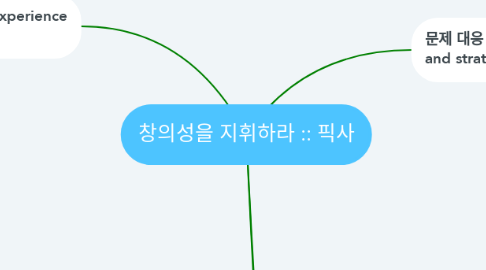
1. Reset objectives from experience in creating Toy Store
1.1. Biz model --> Pixar Image Computer
1.1.1. No Experience Sales
1.1.2. No resource such as sales, marketing
1.1.3. How to cowork with Steve Jobs
1.2. Get comment & execution but no effectiveness without internalization --> need to effort to find essential
1.2.1. A simple answer may be reasonable in itself, but it makes it impossible to ask more essential questions.
1.2.1.1. Example ::
1.3. Computer manufacturer
1.3.1. Must learn meaning of producing computer
1.3.2. Consider about creative production
1.3.2.1. United States
1.3.2.1.1. Keep the conveyor belt moving.
1.3.2.1.2. Efficiency = mass production
1.3.2.1.3. Ford
1.3.2.2. W. Edwards Deming
1.3.2.2.1. Product Quality Theory
1.3.2.3. Japan
1.3.2.3.1. Toyota
1.3.3. The deficit, the deficit and the deficit : Continouse loss
1.3.3.1. Profit structure problem
1.3.3.1.1. No sales result (300)
1.3.3.1.2. Spend long time to design of next model
1.3.3.2. Fire Employee
1.3.3.3. Give up H/W
1.3.3.4. Try to sell company
1.4. Chance :: Walt Disney Animation Studios
1.4.1. If failed to do something that costs millions of dollars, there is no next chance.
1.4.2. Toy Story
1.4.2.1. IPO
1.4.2.1.1. Success
1.5. Focus on inside of company(organization)
1.5.1. No recognize what's going on inside the company.
1.5.2. "During the production of Toy Story, I perceived my task as managing internal/external dynamics so that Pixar employees can focus on their goals. I tried to keep Pixar from following mistakes made by Silicon Valley companies. To do this, I walked around the office so that I could meet employees and watched what the employees were doing . John Raster and I deliberately put a lot of effort into ensuring that all Pixar employees are speaking and respected. I sincerely believed that all employees should be self-assessment and sound criticism, and I went around the workplace as often as possible to listen to them."
1.5.2.1. What is your role in N/W team and your each own part or project?
1.5.2.2. To try role defined by yourself, which way will you use?
1.5.2.3. What kind of effectiveness do you expect to get??
1.5.3. Finally open eyes to disturbing factor
1.5.3.1. Cracks between departments (management department vs creative department)
1.5.3.1.1. Does you part or team have any disturbing factor?
1.5.3.1.2. If yes, can you rasie it up to make better way?
1.5.4. Find reason
1.5.4.1. Why didn't anyone tell me the problem?
1.5.4.1.1. Confusion between communication structure and organizational structure.
1.5.5. Aim for a creative corporate culture that constantly asks questions
1.5.5.1. Creating a sustainable creative company culture.
1.5.5.1.1. Not only word but also trying to practice always
1.5.5.2. What is John's answer??
1.5.6. (Essential) What can be done to prevent the organization from collapse from complex problems?
1.6. Building Pixar's Identity
1.6.1. 2 Rules
1.6.1.1. Story is KING
1.6.1.2. Trust process
1.6.2. Toy Story 2
1.6.2.1. For Viedo quality
1.6.2.1.1. No match with Pixar's core value
1.6.2.2. Mistake in judgement / decision
1.6.2.2.1. Easier more then Toy story
1.6.2.2.2. Wrong resource allocation
1.6.2.2.3. No expected output
1.6.2.2.4. What method(decision) can be happen????
1.6.2.2.5. Restart completely
1.6.2.3. Essential to analyze mistake
1.6.2.3.1. What are we missing? Why did we make the wrong prediction? Why did we fail to control while evidence that there was a problem with the work continued to accumulate?
1.6.2.4. Experience to define Pixar
1.6.2.4.1. Lesson
1.6.2.4.2. Management model that puts people first
1.6.2.4.3. Building a corporate culture where employees participate in improving product quality.
1.6.3. Back to the rules
1.6.3.1. Story is KING
1.6.3.2. Trust process
2. 문제 대응 및 미래 보호 전략(Problem response and strategies of protecting future)
2.1. The value of honesty
2.1.1. Don't share all of your opinions
2.1.1.1. Dilemma
2.1.1.1.1. To solve a problem, you need to accurately grasp the facts, issues, and intentions of the other person.
2.1.1.2. Hide
2.1.1.2.1. By fear and self-protection instinct
2.1.2. Speak without hiding
2.1.2.1. candor
2.1.2.1.1. How can executives(leaders) be able to communicate honestly with working groups, departments, and corporate employees?
2.1.3. Braintrust
2.1.3.1. Purpose
2.1.3.1.1. Talking honestly to identify and solve problems.
2.1.3.2. Meeting??
2.1.3.3. Constructive criticism
2.1.3.3.1. Complementary approach
2.1.3.3.2. Sned note / Give opinion
2.1.3.4. Leader's role??
2.1.3.4.1. To make sure that the meeting is going meaningfully by having the attendees talk openly enough.
2.1.3.4.2. Finding and meeting employees who want to tell the truth.
2.1.3.5. Focusing energy on the problem at hand, not on individual problems
2.1.3.6. Who Should Participate?
2.1.3.6.1. Someone who can help you think smarter.
2.1.3.6.2. Someone who can come up with many solutions at a set time.
2.1.3.7. No prescribe a solution to the problem they have diagnosed.
2.1.3.7.1. The decision to apply the diagnosed content to the person in charge..
2.1.3.8. An environment where employees want to hear the opinions of other employees. How can I make it?
2.1.3.9. Focus on the problem, not the person when pointing out a problem.
2.1.3.10. What if the attendees don't express their opinions honestly?
2.1.3.10.1. Mini Braintrust
2.2. Hungry beast and ugly baby :: 배고픈 짐승과 못난이 아기
2.2.1. Back ground of story
2.2.1.1. Disney's downturn
2.2.1.1.1. For 16 years (1994~2010)
2.2.1.1.2. Business expansion >>
2.2.1.1.3. Misunderstanding of each member's mission
2.2.2. The process of completing a work (product)
2.2.2.1. General
2.2.2.1.1. Idea >>
2.2.2.1.2. Time and patience
2.2.2.1.3. Should keep endurance from pressure to make profit quickly during process of completing product
2.2.2.2. Duty of executives
2.2.2.2.1. Protection (Idea)
2.2.2.3. Lession & Learn
2.2.2.3.1. Pixar
2.2.2.4. 다른 기업에서 벌어지고 있는 일
2.2.2.4.1. Pursuing only the efficiency and consistency
2.2.3. How should be idea protected?
2.2.3.1. Beast ans Ugly baby
2.2.3.1.1. (Beast) Organizations that need to keep getting new resources in order to function properly.
2.2.3.1.2. (Ugly baby) Idea
2.2.3.1.3. B**
2.2.3.2. How to control beast?
2.2.3.2.1. 문제
2.2.3.2.2. 명제
2.2.3.2.3. 결론 (경영자의 책무)
2.2.3.2.4. 기업
